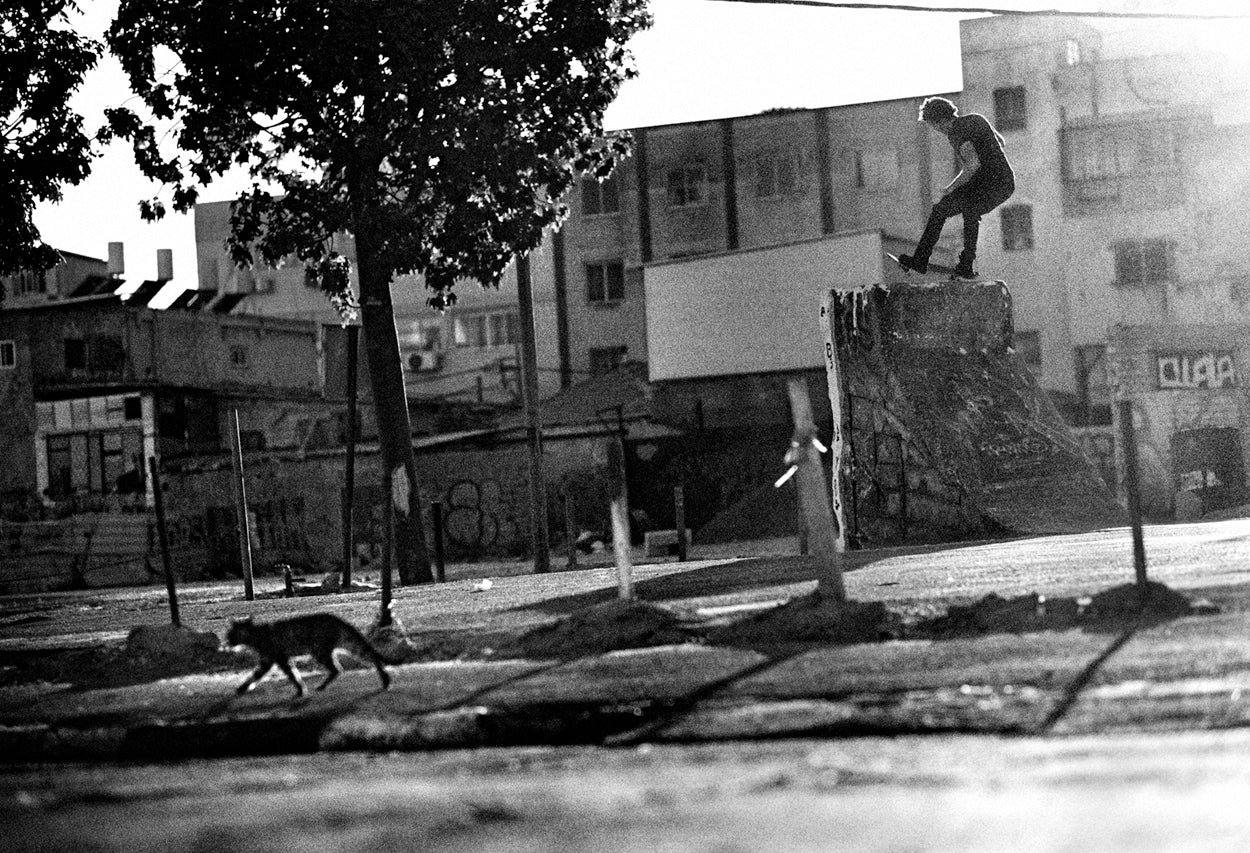Fred Mortagne is a talented photographer who recently undertook the project of creating a photo essay about skateboarding on Holy Grounds. He traveled around Jerusalem in 2010, taking photos that contrast skateboarding life to every day life in Jerusalem, Tel-Aviv, and the Dead Sea. Fred tells us a little about his experience today and shares the final product of Hand in Hand. Read on to view the full Hand in Hand book!
How long have you been doing photography and what got you started?
It's videography that lead me to photography. I've been making skateboarding videos since 1994, and I still do. With video you can do and show things you can't with photo, and vice versa, so I naturally came to use both mediums, often even trying to combine them together when possible. They are very complementary. For me it would be impossible to pick one and forget about the other. So I'm always juggling between the two.
Tell us a little bit about Hand in Hand and what it's all about. What inspired the project?
Since I've always been going on skateboard trips to shoot video, for once I wanted to go as the photographer, trying to go beyond what skateboarder photographers do—not focusing strictly on the action shots, but trying to capture and share the lifestyle part of skateboarding and blending in the local culture. There was an idea to make a little book, but there was no idea or concept. It came as it was happening. I quickly noticed some things in common between the place and culture we were discovering and our little skateboarding bubble we were in. From there came the idea of a layout on which each double spread in the book would combine a skateboard related picture and one from the local everyday life.
(Be sure to expand to get the full Fred Mortagne experience!)
What made you choose black and white photos over color for this project?
I mostly shoot black and white. I like the timeless feel of it. It brings you out of the everyday life reality. I see real life everyday through my eyes, so in my photography, I like it to go beyond reality. Shooting in Jerusalem was great because it's an old city. A lot of neighborhoods are made with tiny alleys where cars don't go, and there aren't any ads or commercials up on the walls. People dress well, so there's no visual pollution. It is very photogenic. And it gives you the impression of travelling back in time. So shooting in black and white reinforces that feeling. Some pictures could have been shot 50 years ago. They would have been the same.
Were there any obstacles while shooting this project?
No, except one saturday morning. I went wandering around in an old Jewish hood. I was ignorant about the Jewish religion and customs. I didn't realize it was Sabbath, nor new that on that day, Jewish people are not allowed to do anything, like using objects, telephones, bikes, nothing—nothing.
So a guy spotted me from afar and started following me. At some point I saw a nice graffiti (Tom Waits on page 31). I approached it and was about to snap a photo, but the guy rushed to me shouting "no no no!" He was mostly speaking in Hebrew, and all I could understand was the word "provocation." I instantly realized the problem, apologized, and left the scene. Then I came back the next day.
I also wanted to go out at night in the old city of Jerusalem, but I was scared to do it. The place is beautiful, but during the day it is so busy. Then I met a young photographer who told me she's been there many times at night, and it's completely safe. So, one night I went and wandered for hours and hours until the sun rose. I deliberately got lost, and I was listening to some special music to get in a special mode, getting into a sort of trance. It was a unique and very intense experience. I shot so many good pictures that time. At the beginning of the book, I propose that the viewer browse the book while listening to the same music that was in my ears while shooting.
Fred has prints of the photographs from Hand in Hand available for purchase. Contact him at info@frenchfred.com if you're interested!




